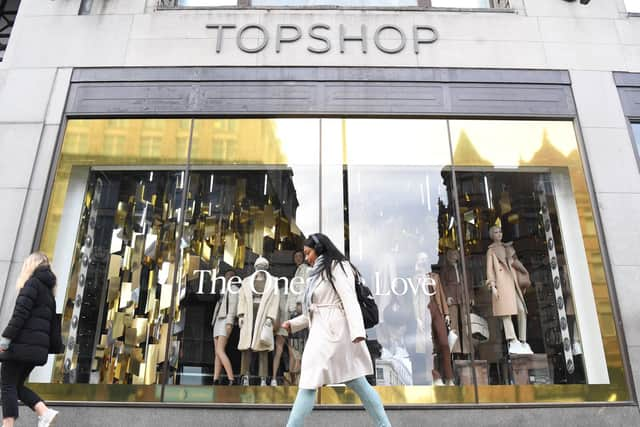More than 900 chain stores closed in Yorkshire during 2020 with warning the worst is yet to come
Research from PwC and the Local Data Company (LDC) showed that almost 10,000 chain stores disappeared from Great Britain’s retail locations in 2020.
In total, 7,655 shops opened, compared to 17,532 closures, a net decline of 9,877. Although a decline was to be expected in a pandemic this is the worst ever seen with an average of 48 chain stores closing every day, and only 21 opening.
Advertisement
Hide AdAdvertisement
Hide AdThe findings starkly compare to five years ago in 2015, which showed Yorkshire store openings at 1,063 and store closures at 1,056 a net positive gain compared to 2020 which saw a net fall of 922 outlets.


The categories of outlets most affected by closures across Yorkshire were fashion retailers, pubs and bars, betting shops, banks and financial services, travel agents, restaurants and mobile phone shops.
And the researchers add that the real impact of the pandemic is yet to be felt as some stores ‘temporarily closed’ during lockdowns, but considered as open in the research, are unlikely to return.
Retail parks have seen the smallest number of net closures of any location (30) in Yorkshire, compared to standalone stores (360), shopping centres (158) and faring worst of all was the
high street (374).


Advertisement
Hide AdAdvertisement
Hide AdJoel Smith, PwC consumer markets lead for Yorkshire & Humber, said; “For the first time, we’re seeing a widening gap between different types of locations: city centres and shopping centres are faltering, but certain retail parks with the right customer appeal are prospering.
“Location is more important than ever as we see a reversal of historical trends. For years, multiple operators have opened more sites in cities and closed units in smaller towns. As
consumer behaviours and location preferences change, partly as a result of COVID-19, retailers are moving to be where they need to be. Small towns will remain important but we
can expect recovery in cities as workers and tourists return, albeit in smaller numbers adopting more flexible working models.”
Advertisement
Hide AdAdvertisement
Hide AdHe added: “The effect of COVID-19 is yet to be seen on most categories as much of the impact we’ve seen this year is a reflection of things that happened before the pandemic and not just the move online but areas such as legislative changes, e.g. for betting shops, consolidation due to previous overexpansion, or chainwide closures for restaurants and mobile phone stores that found themselves in trouble pre-COVID-19.
“The full extent will be revealed in the coming months as many of the CVAs and administrations in the early part of 2021 still haven’t been captured, including department
stores, fashion retailers and hospitality operators that will leave big holes in city centre locations. Retail and leisure operators must take action to ensure they are in the right places,
so they’re not left surrounded by empty units and shopfronts.
Advertisement
Hide AdAdvertisement
Hide Ad“However, there will be big opportunities for growth into the gaps that are emerging. After the global financial crisis we saw growth of discounters and foodservice chains that replaced
exiting retailers. There is an opportunity for operators who can find the right location at the right time to thrive, even despite the current uncertainty.”
Lucy Stainton, Head of Retail and Strategic Partnerships at The Local Data Company said; “2020 has been an undeniably challenging and transformative year for the physical retail and
leisure landscape and the acceleration of chain store closures seen in our latest research is unlikely to surprise many.
Advertisement
Hide AdAdvertisement
Hide Ad“With the restrictions in place during each of the three national lockdowns, only c.17% of the market was classed as ‘essential’ and thereby permitted to trade. However, the damage to
footfall in some city centre locations and particularly in London meant that a number of chains opted to temporarily shutter their stores irrespective of their ‘essential’ status. The question
now becomes – have we seen the worst of the damage? These numbers only include store closures we know to be permanent and when government support schemes end, we expect a
further increase in store closures before the picture starts to improve."